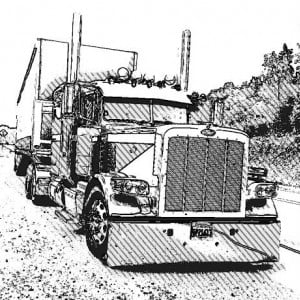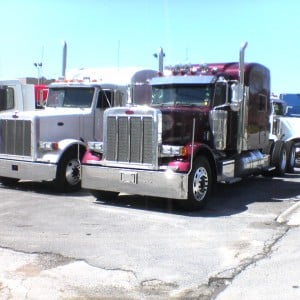ironpony
Professional Pot-Stirrer
[Comment - this reflects the current state of the technology.]
A new report from the Insurance Institute for Highway Safety (IIHS) on autonomous vehicles is out, and the results are clear. While the IIHS says autonomous systems can provide some safety benefits, self-driving systems “aren’t robust substitutes for human drivers.”
IIHS’s study used only cars that are already available for purchase by the public. So it did not include systems still in testing like those from Google’s self-driving company, Waymo. Instead, the test subjects were a BMW 5 series, a Mercedes-Benz E-Class, the Volvo S90, and Tesla’s Model 3 and Model S.
The IIHS tested the ability of all of the cars to use adaptive cruise control, active lane-keeping, and automatic emergency braking. According to IIHS chief research officer David Zuby, “some systems handled some situations better than others.”
All of the cars but the Teslas had trouble braking consistently when a vehicle was stopped in the road ahead of them for example. But then the Teslas were the only ones who collided with a test balloon in an emergency braking situation when adaptive cruise control was turned off. The cars performed as intended though, applying emergency brakes to mitigate the severity of impact. When adaptive cruise control was activated, the cars stopped earlier and gentler and avoided the balloon entirely.
In addition to their technical shortcomings, IIHS found that self-driving systems can be dangerous because people expect their cars to keep them safe. When a self-driving system is activated, people are less likely to be paying close attention to the road around them, creating unsafe situations.
While autonomous-equipped cars currently on the road can offer some safety benefits, IIHS concluded that “the early results underscore the fact that today’s systems aren’t robust substitutes for human drivers.”
Source: gobytrucknews, thehill, insurancejournal, wired, chicagotribune, iihs
By Samuel Barradas.
A new report from the Insurance Institute for Highway Safety (IIHS) on autonomous vehicles is out, and the results are clear. While the IIHS says autonomous systems can provide some safety benefits, self-driving systems “aren’t robust substitutes for human drivers.”
IIHS’s study used only cars that are already available for purchase by the public. So it did not include systems still in testing like those from Google’s self-driving company, Waymo. Instead, the test subjects were a BMW 5 series, a Mercedes-Benz E-Class, the Volvo S90, and Tesla’s Model 3 and Model S.
The IIHS tested the ability of all of the cars to use adaptive cruise control, active lane-keeping, and automatic emergency braking. According to IIHS chief research officer David Zuby, “some systems handled some situations better than others.”
All of the cars but the Teslas had trouble braking consistently when a vehicle was stopped in the road ahead of them for example. But then the Teslas were the only ones who collided with a test balloon in an emergency braking situation when adaptive cruise control was turned off. The cars performed as intended though, applying emergency brakes to mitigate the severity of impact. When adaptive cruise control was activated, the cars stopped earlier and gentler and avoided the balloon entirely.
In addition to their technical shortcomings, IIHS found that self-driving systems can be dangerous because people expect their cars to keep them safe. When a self-driving system is activated, people are less likely to be paying close attention to the road around them, creating unsafe situations.
While autonomous-equipped cars currently on the road can offer some safety benefits, IIHS concluded that “the early results underscore the fact that today’s systems aren’t robust substitutes for human drivers.”
Source: gobytrucknews, thehill, insurancejournal, wired, chicagotribune, iihs
By Samuel Barradas.














